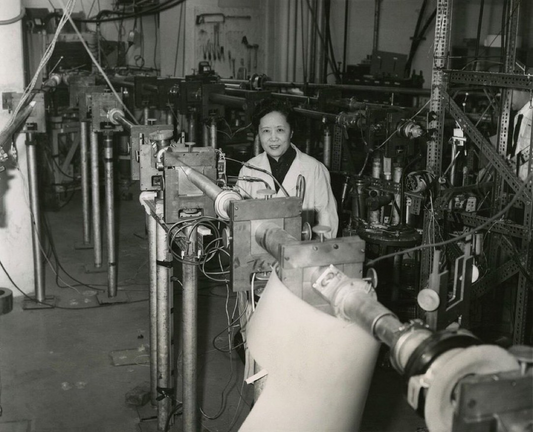| Med | @tonic |
| Personal | @tonic |
| https://twitter.com/josephpollack/ |
Joseph P.
- 17 Followers
- 840 Following
- 293 Posts
A team led by physicist Chien-Shiung Wu obtained the first experimental confirmation of parity violation in the decay of Cobalt-60, #OTD in 1956.
Her theory colleagues received a Nobel for predicting this phenomenon, but she was left off the prize.
Image: Smithsonian Institution Archives
"The software is designed to build a record of care that can be translated into billing codes, and this sometimes diverges from the reali- ties of clinical care.29 Several of our respondents voiced the concern that there could be unintended consequences or biased analyses if precision medicine researchers fail to adequately recognize
that much of #EHR data is #BillingData, not #ClinicalData"
Can we bold that, please?
A great paper from @annagloyn and colleagues! Happy we were able to contribute.
"A genome-wide CRISPR screen identifies CALCOCO2 as a regulator of beta cell function influencing type 2 diabetes risk" Nature Genetics.
Teach a man to fish, and he’ll eat for a lifetime.
Teach a man to be a fish biologist, and he’ll have an increasingly difficult relationship with eating fish, as he navigates the difficulties of a complex conservation landscape, attempting to avoid, not only starvation, but the over-exploitation of sensitive populations and the harmful health effects of the likes of PCB, PFAs, and mercury pollution.
Other roles for mitochondrial dynamics proteins in the #heart include helping to move #calcium into the mitochondria and regulating the structure of the mitochondria.
#Mitochondria are organelles in cells that are responsible for producing #energy. They can change their structure by breaking apart (#fission) and reforming (#fusion). This process is complicated and energy intensive, so it is important to understand why it is necessary.
How Mitochondrial Dynamism Orchestrates Mitophagy
Orian S. Shirihai, Moshi Song, Gerald W. Dorn II
Understanding the Significance of Mitochondrial Fission and Fusion
Mitochondrial dynamics refers to the movement of #mitochondria within a cell. This includes #fission, which is when mitochondria divide into two parts, #fusion, which is when two mitochondria join together, and #translocation, which is when mitochondria move from one part of the #cell to another.
In this Research Article, Marjan Abbasi et al. identify two #phosphosites in the #yeast spindle pole body protein Spc110 that regulate timely cell cycle progression:
https://journals.biologists.com/bio/article/11/11/bio059565/280976
Find out more about the story behind the paper in this interview with first author Marjan, who is a PhD student in the lab of Victoria Menendez-Benito at the Karolinska Institutet, Stockholm, Sweden:
https://journals.biologists.com/bio/article/11/11/bio059713/281165
#Centrosome #SPB #CellScience #Biology #Science #CellCycle #Research #BiologyOpen
Phosphosites of the yeast centrosome component Spc110 contribute to cell cycle progression and mitotic exit
Summary: We identified two phosphosites (S11 and S36) in the yeast centrosome component Spc110 from maternal origin and found that these phosphosites control timely cell cycle progression.
